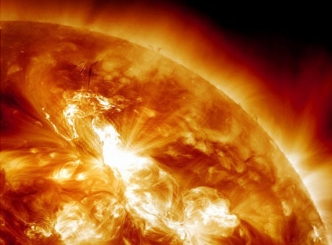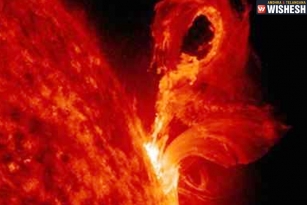Study of gas explosions on the surface of sun essential to understand space weather
July 04, 2012 19:16
Scientists from Inter-University Centre for Astronomy and Astrophysics (IUCAA) worked in collaboration with the University of Cambridge and the Rice University to obeserve for the first time the inception of a solar explosion. And not merely witnessing it but also they could record the speed of the explosion to be over 20km per second in the active region loops where the temperatures were as high as a million degrees.
Durgesh Tripati, who works with IUCAA, was an active member of the team and a witness to this remarkable event said “The gases that travel towards the Earth folllowing a gas explosion at the sun has the capacity to disrupt the power girds and the functioning of satellites. Hence studies like this could be of extreme importance in figuring the required precautionary measures to prevent any calamities”. He added “ At the active regions of the sun, where the explosions are most common, are regions of high magnetic energy fields and they could store huge amounts of energy due to the subsurface motion that causes the distortion of field lines.
The Sun, though, is majorly made up of gases like Hydrogen and helium, there is also a presence of other elements like oxgen and iron in trace amounts in the ionized gas which is present in these active loops. Chromosporic evaporation causes the gases to move and this causes instantaneous heating in small scale which forms the solar active regions. If the same events occur on a large scale it would lead to the massive explosions that manifest as solar flares or coronal mass ejections.
Since the solar activity is cyclic, it has been predicted that such an occurrence would occur again around May 2013. The scientists are hopeful that they could identify the magnetic field structures in the future by conducting more studies on the actice regions. Such information would be of paramount importance in predicting the next future occurrences accurately.
Reacting to this new studies published recently, Richard Harisson, the head of the space physics and chief scientist at the STFC Rutherford Appleton Laboratory said “Sun is majorly responsible for the environment that we live in and hence an understanding of the sun's active regions could be of critical importance to understand the impact of these explosions on the space weather”.
AW - Anil
















